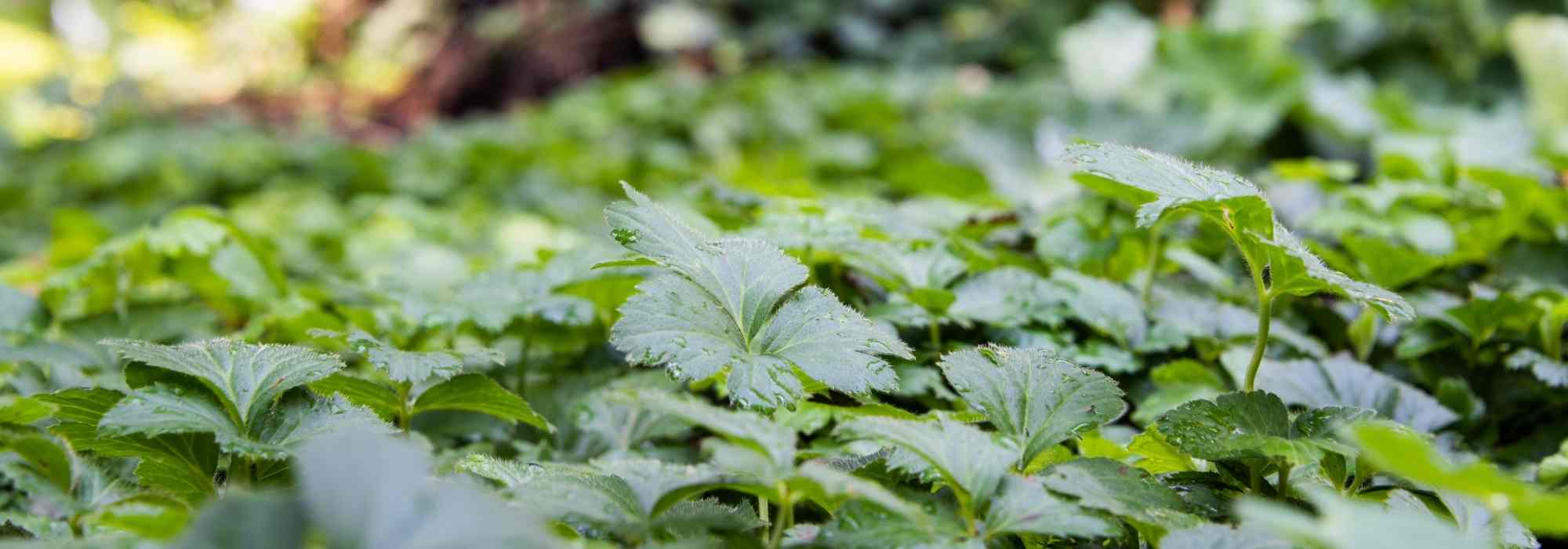
The 10 best young groundcover plants against weeds
Our selection of impenetrable perennials
Contents
Planting perennial groundcovers offers many advantages: protect soil from cold, drought or leaching and maintain fertility and good soil structure. But it’s also an opportunity to reduce weeding effort. Because a tapetum of perennial groundcovers effectively limits weed shoots. Even so, we now prefer to speak of adventives as all plants have their use. Let’s also keep in mind that a bed of perennial groundcovers must also offer a pleasing sight, and this for a large part of the year. Sadly, it is difficult to make an exhaustive list of the best anti-adventive groundcovers. We had to make a choice. Discover the ten perennials preferred by editorial staff, effective against weeds.
Géranium macrorrhizum: tapetum of aromatic leaves for dry shade
Several hardy geraniums can be used as ground cover. But none matches vigor and robustness of Geranium macrorrhizum. A true plant bulldozer, it’s almost the only perennial that will even set back ivy! This hardy geranium completely prevents adventive weeds from growing.
Geranium macrorrhizum is a ground cover with fuzzy, aromatic but above all evergreen foliage. It flowers from May to June, with a few small repeat blooms during the season, in small pink or white flowers depending on variety. It even puts on beautiful orange-red foliage in autumn.
This hardy geranium colonises a wide area quickly thanks to its rootstocks. It looks very attractive planted en masse, forming a very regular tapetum. All this makes it very valuable for planting at base of a hedge or trees, at edge of a part-shade path, in spaces between roses and other bushes.
Grow it in part shade or even dry shade under trees, sneaking between roots never daunts it. This perennial is very hardy, tolerant of soil conditions, and resists drought admirably. Once established, Geranium macrorrhizum requires no maintenance.
There are some interesting varieties, notably ‘Spessart’ with white flowers and ‘Olympos’ with pink-violet flowers.
→ Also discover our advice sheet : Hardy geraniums, best ground covers
Read also
Hardy geraniums: the best ground coversPachysandra terminalis: glossy, evergreen foliage for cool shade
Pachysandra terminalis, also called Japanese spurge, is a perennial groundcover with evergreen foliage for shaded situations. Able to withstand root competition, it is ideal companion for trees and hedges, whose bases it covers with its beautiful glossy leaves all year round.
Those of variety ‘Green Carpet’ are even glossy, giving the tapetum a very fresh green. Plant is compact, reaching no more than 15 cm in height. Japanese spurge can sometimes take one to two years to establish but once past that period, it grows regularly to form a dense tapetum preventing adventives from growing.
At start of summer, Pachysandra terminalis produces a discreet white flowering, punctuating foliage with small spikes a few centimetres high.
Pachysandra terminalis thrives in shade or partial shade but not in sun which would scorch foliage. Japanese spurge prefers rich, cool but well-drained soils. This perennial is hardy and tolerates all types of neutral or slightly acidic soils. Once established, pachysandra requires no maintenance.
→ Also discover our complete fact sheet on Pachysandra
Discover other Ground cover perennials
View all →Available in 0 sizes
Available in 0 sizes
Available in 0 sizes
Available in 0 sizes
Available in 0 sizes
Available in 1 sizes
Available in 0 sizes
Available in 0 sizes
Available in 1 sizes
Available in 0 sizes
Stachys byzantina: a velvety groundcover for sunny spots
Stachys byzantina (synonym: Stachys lanata) is a perennial plant with running rootstock, native to Eurasian calcicolous short grass meadows. It therefore favours well-drained soil but preferably loose and deep. It is extremely cold-hardy and perfectly suited to summer drought. This perennial has oblong, grey, villous leaves, soft as… ‘bear’s ears’ or ‘rabbit’s ears’, which earned it both common names.
Stump is running and very quickly produces new basal rosettes. Only two buckets of Stachys can colonise one square metre in a season. Quite impressive! Stachys byzantina is an essential groundcover in a dry, no-watering garden or in a rockery that is not too arid. It will form superb velvety, evergreen tapetum whose white colour will set off all companion plants, particularly pink flowers or blue tones.
Stachys byzantina produces, from June to August, cottony flower stems adorned with a few small, rather discreet pink flowers that inevitably attract bumblebees and bees.
Variety ‘Big Ears’ (French ‘grandes oreilles’) was named for the size of its leaves, noticeably larger than those of the type species.
Stachys byzantina thrives in sun in loose, deep, poor and well-drained soil. It fears heavy soils, waterlogged in winter which can rot its roots. It tolerates presence of lime in soil and very dry summers once well established. This groundcover requires no maintenance apart from a quick pruning of faded flowers to prevent plant becoming bare.

Stachys byzantina, foliage and flowering
→ Discover our full factsheet on Stachys
Read also
How to plant hardy geraniums?Vinca minor or lesser periwinkle: small but hardy in any exposure
Small-flowered periwinkles are perfect groundcovers as they colonise even the shadiest spots, where they will, however, be a little less floriferous. They quickly form a dense tapetum, effectively covering soil beneath trees or bushes whose roots they do not fear, in rockeries or along paths. Vinca minor naturalise easily in a somewhat wild underwood.
The Vinca minor ‘Gertrude Jekyll’ is an exceptionally dense, covering small periwinkle, which forms a low tapetum woven of evergreen leaves of an elegant dark green. In contact with soil, stems send out vigorous roots that allow this plant to continue its lateral growth and to greatly limit emergence of adventives. Early in spring, a multitude of small white stars open to brighten partially shaded areas of garden. It is a reliable, hardy perennial that makes good groundcover in partial shade or under trees whose roots it does not fear.
Small periwinkles accept any type of fresh soil and are more attractive in soil that does not dry out, although they perfectly tolerate summer drought and do without watering. They thrive in all exposures, with a preference for partial shade. Small-flowered periwinkles perfectly tolerate lime and poor soils.
→ Also discover our full page on Periwinkles
Bergenias: the comeback of an unloved plant as useful as it is hardy
Bergenias: love them or… hate them! Some criticise them for leaves that are too large and a flowering sometimes… not particularly delicate. But they are above all a remarkably effective and extremely robust plant. One can appreciate the diversity of bergenias, and incidentally the beauty of this genus, by taking a closer look at certain varieties: with white or paler flowers or, conversely, a more intense pink, with small leaves, with attractive autumn foliage colours… In short, let’s stop sulking about bergenias or «Shoemaker’s plant» because it is one of the most exceptional evergreen perennial plants.
Bergenias are groundcover perennials much appreciated for their evergreen foliage, green taking reddish hues in winter and for their spring flowering in dense clusters of flowers often pink, white or red depending on variety. This flowering appears from late March for the earliest (sometimes even much earlier!) to mid-June. Bergenias are long-lived and can live for several decades with virtually no care.
The Bergenia cordifolia ‘Eden’s Dark Magic’ is an ornamental variety throughout the year thanks to its large glossy, crinkled leaves nicely edged with a red line, which gradually turn to a very dark purple then to glazed brown in autumn, as well as for its vividly coloured spring flowering of magenta pink and red.
This plant grows on a creeping rootstock and, over time, can cover a considerable area, but its growth is relatively slow. So plant at least seven per square metre from the start. Afterwards, the foliage will cover the soil surface so completely that no other plant will be able to grow within the bergenias.
Bergenia ‘Eden’s Dark Magic’ will grow well in most soils, but a humus-rich, moist soil is ideal. It will thrive in shade, partial shade or in a sunny position that is not scorching. It can advantageously be used in rock gardens as a groundcover, to edge a path, or at the base of deciduous bushes.
→ Discover our complete factsheet on Bergenias
Epimedium: a groundcover for an enchanted woodland understorey
Epimediums are beautiful perennial groundcovers suited to shade. In spring they bear small, fairy-like flowers that have earned the plant its charming nickname, “Flower of the Elves”.
Dense foliage of epimediums makes them excellent groundcovers against adventive weeds. They are plants that spread slowly thanks to their rootstocks. Leaves often take superb colours in spring and autumn, but beware, depending on variety and species, foliage can be deciduous or evergreen.
Among epimediums, Epimedium alpinum is a small wild species, native to Central and Eastern Europe. In spring this perennial is covered with a cloud of small reddish-brown and yellow flowers. It is cultivated for its evergreen foliage, apple-green in spring then deep green in winter, forming a tapetum 30 cm high.
Very hardy and easy to grow, Epimedium alpinum grows in all exposure conditions but shows at its best in shade, under trees or on a shaded bank. Among the Flowers of the Elves, western species tolerate more challenging growing conditions than eastern species, such as dry shade, and even cope with heavy or calcareous soils.
Plant Epimedium alpinum in shade or partial shade (and even in non-scorching sun) in light, humus-bearing soil that remains cool in summer. This species grows relatively slowly, so plant at least 5 per square metre for immediate effect. This epimedium will live for many years without particular care.
→ Discover our complete fact sheet on Epimediums
Sweet woodruff: a native perennial of our woodland understorey
Galium odoratum, better known as gaillet odorant or sweet woodruff, is a small woodland perennial, very hardy, that forms attractive carpets of green and comes alive in spring with charming small ivory-white flowers, melliferous and delicately scented.
An excellent evergreen groundcover, sweet woodruff is ideal for shaded areas of the garden, dressing them with the discreet charm and effectiveness of wild plants. This plant spreads rapidly sideways by means of its rootstocks.
The flowering, slightly scented, occurs from May to June through inflorescences resembling small umbels. Once pollinated by insects, the flower gives way to a small pilous fruit that clings to animal fur, ensuring dispersal of the plant (this is called zoochory).
This rustic perennial is used as groundcover at the base of deciduous bushes, along a path or a shaded wall. In former times, its freshly cut leaves were used to scent the home and the flowers were used in making posies to place in wardrobes, to repel insects and scent linen. Note also that the flowers can be used to flavour white wine (this mixture is called Maitrank in southern Belgium).
Galium odoratum withstands cold well (-20°C) and grows in non-scorching sun or partial shade, in soil that remains cool, even clayey, but not too wet in winter. It prefers woodland soil (its natural medium), light and rich in humus. It is a plant that requires no maintenance once well established.
→ Discover our full profile on sweet woodruff Sweet woodruff
Achillea crithmifolia: a tough plant for sunny spots
Achillea crithmifolia, also called crithmum-leaved yarrow, is a vigorous suckering perennial plant capable of quickly forming a dense evergreen tapetum. Its finely divided foliage, silvery grey-green and very soft to touch, bears white to creamy umbels in summer.
This yarrow spreads rapidly over more than a metre via its suckers. Its foliage, evergreen in winter, can sometimes dry out in summer during periods of severe drought. No need to panic, however, plant will regrow at first rain.
Achillea crithmifolia is very hardy and has no particular soil requirements. It is economical with water and limits proliferation of adventive plants, while giving garden a very natural look. This yarrow removes need for mowing but above all for watering required for a lawn, even in dry climate, in moderately trodden areas.
Achillea crithmifolia thrives in full sun (or in partial shade in hot, dry climate) in ordinary soil, well prepared and loosened to ease establishment. It adapts perfectly to well-drained calcareous or clay soils, even if dry in summer.
Delosperma: succulent plant for southern sunshine
Delosperma, perennial ice plant or Delosperma ficoide, is a perennial groundcover plant remarkable for its long, bright flowering and vigorous growth.
It forms cushions of succulent leaves (whose fleshy tissues are rich in water) completely covered with large flowers from June to autumn. This perennial ice plant has creeping stems that root easily, thus colonising an area up to 1 m wide in good conditions, in fertile, not-too-dry soil. It is an excellent groundcover for dry soils, greatly reducing growth of adventive plants.
The Delosperma ‘Wheels of Wonder Orange’ variety produces large bright orange flowers (about the size of a 2 € coin), with yellow centres.
Delospermas establish readily between stones, on paving slabs of a path or on a dry bank, provided they find a little substrate.
These perennial ice plants require little maintenance and are an excellent alternative to short grass meadow in awkward, neglected corners of the garden. It thrives in dry settings, in sun in very well-drained soil. Semi-hardy, it is best grown in a pot in regions where temperatures frequently fall below -10°C.
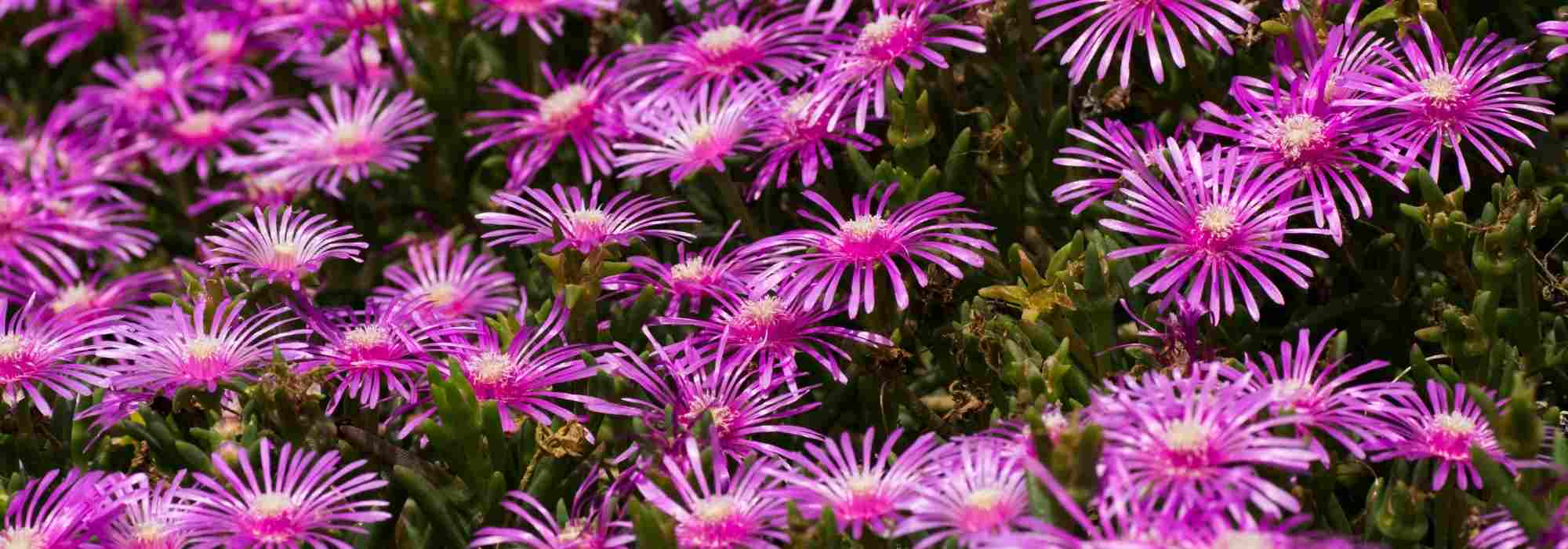
Delosperma cooperi
Ivy 'Bellecour': best groundcover ivy
Yes indeed! Just an ordinary ivy! But not just any: the variety Hedera ‘Algerian Bellecour®’ is a strongly creeping form of Canary ivy.
It produces a generous evergreen foliage, a bright light green in spring, turning a dark green in summer. This vigorous variety quickly forms an outstanding evergreen groundcover, very useful in semi-shaded areas or even in shade. Ideal for dressing a large bank or the base of a hedge, it tolerates both drought and poor or disturbed soils. Ivy ‘Bellecour’ is a perfect solution for combating adventive plants and covering the soil evenly.
With very rapid growth, ivy ‘Bellecour’ can reach 8 to 10 m in length and 40 to 50 cm in height within a few years, its reddish shoots running along the soil. Ivy ‘Bellecour’ is a sterile variety that produces neither flowers nor fruit.
Hedera ‘Algerian Bellecour’ can be planted all year round in ordinary, well-tilled soil, kept moist in summer during the first two years after planting. It is not sensitive to lime, nor to heavy clay soils if they are properly loosened and well drained. It adapts to all exposures, from sun to shade, though it prefers semi-shaded situations. You can prune it regularly to shape it or keep it within a defined space.
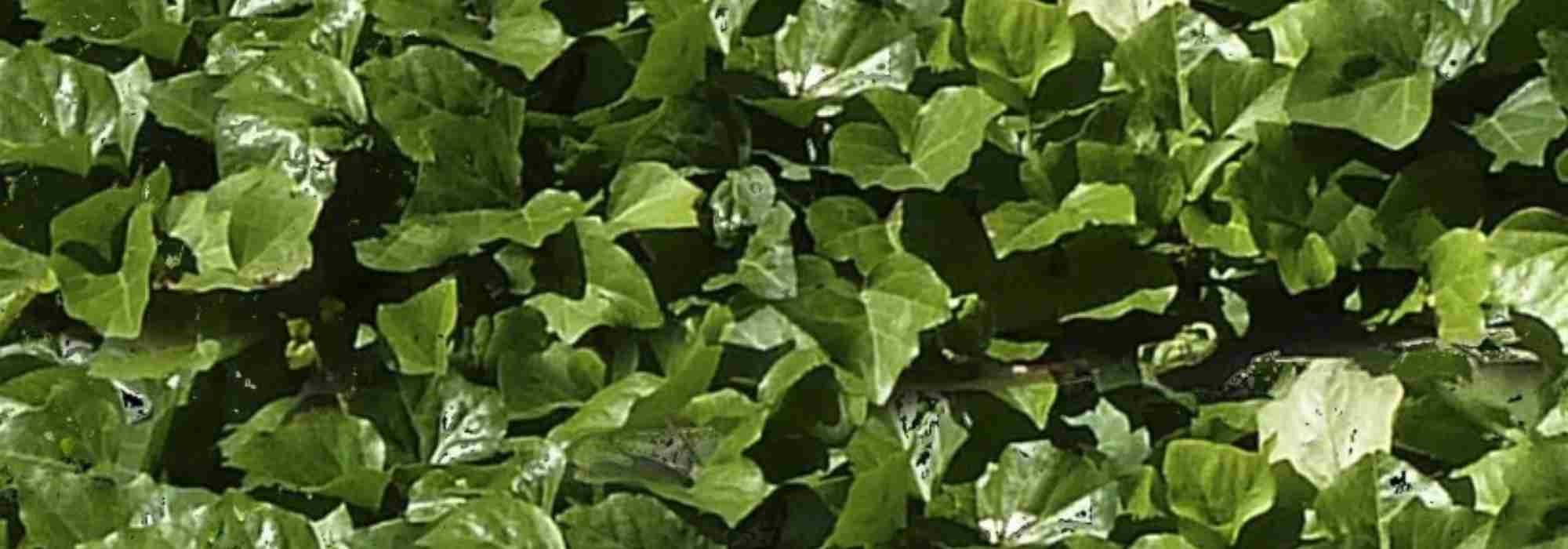
Hedera algeriensis Bellecour
- Subscribe!
- Contents
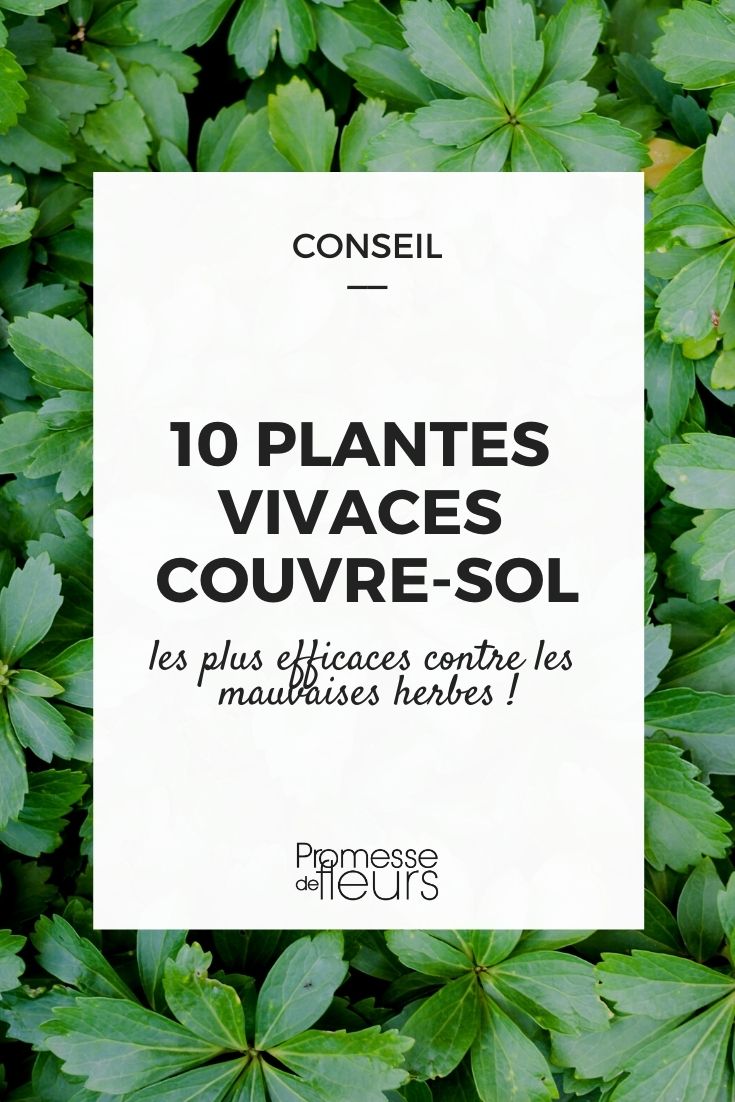































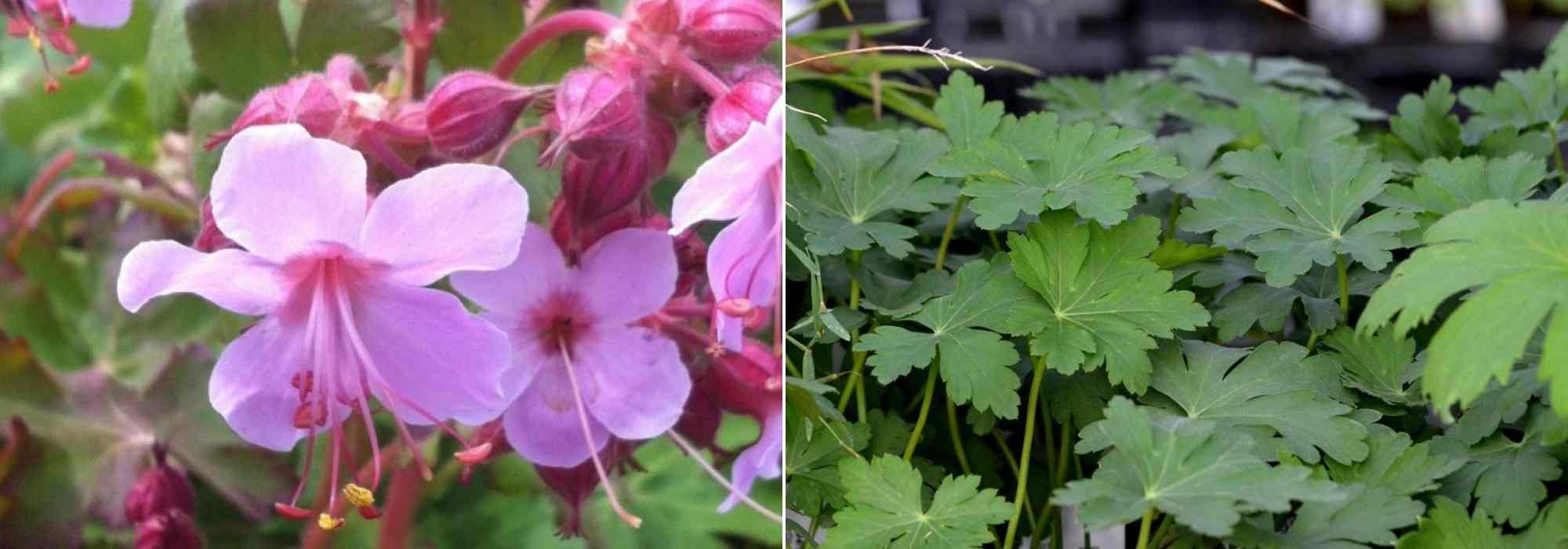
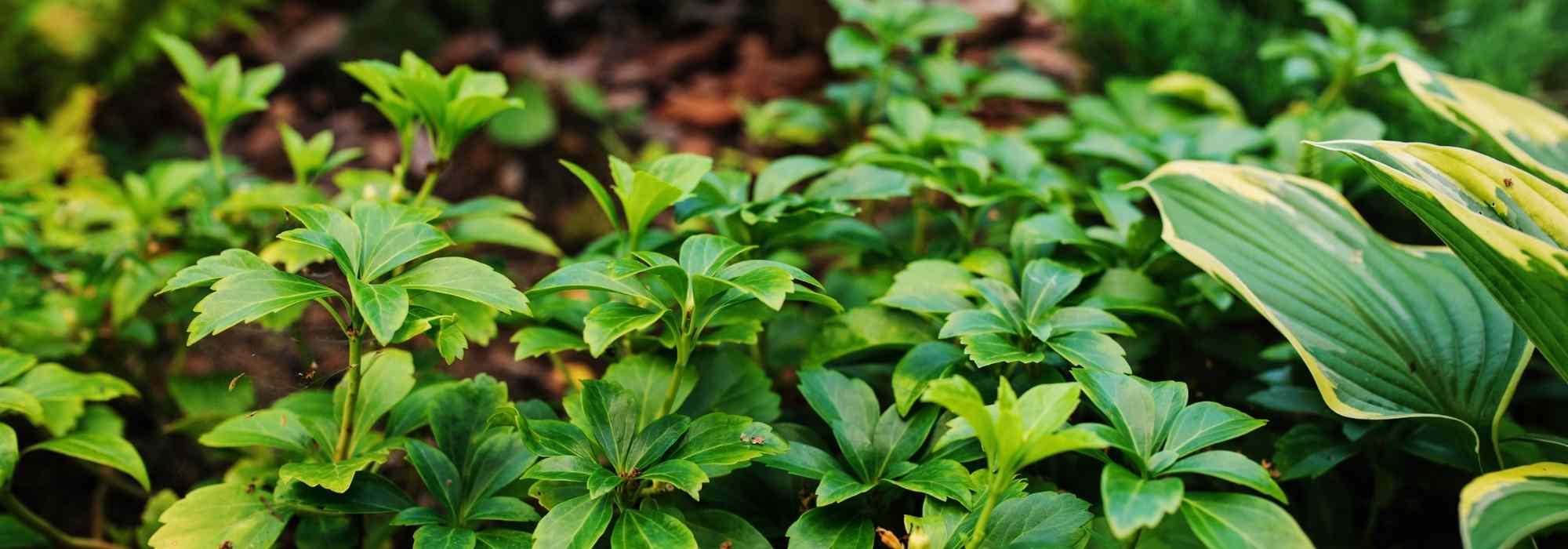
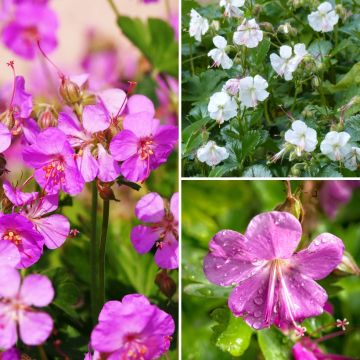
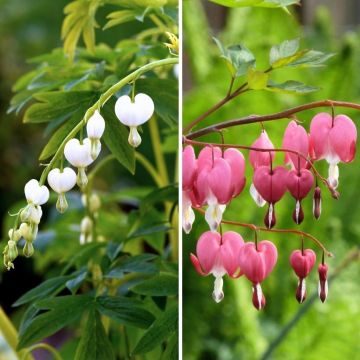
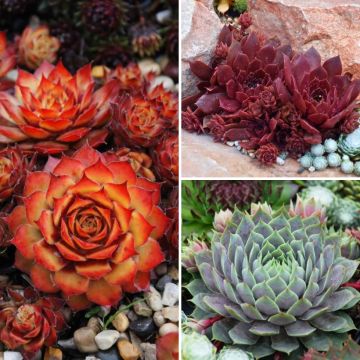
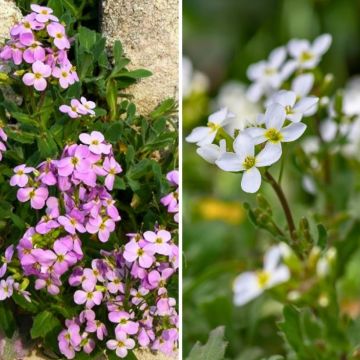
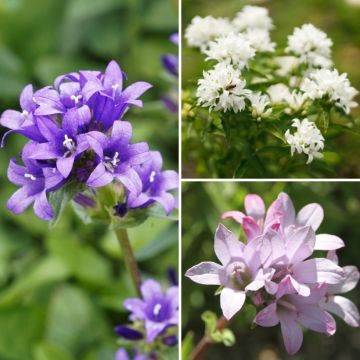
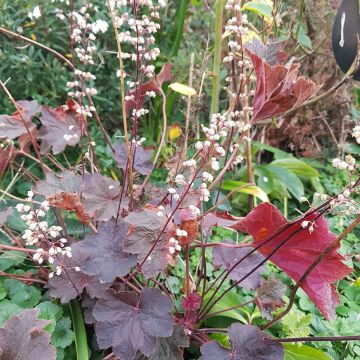

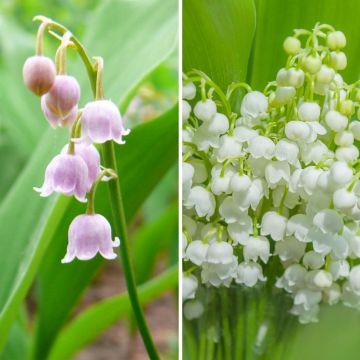
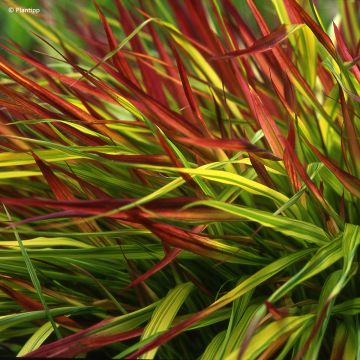
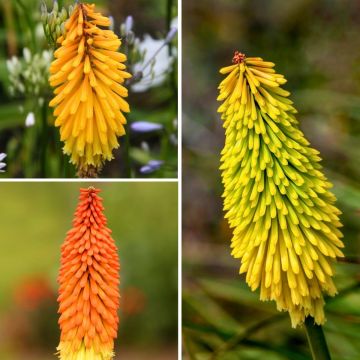
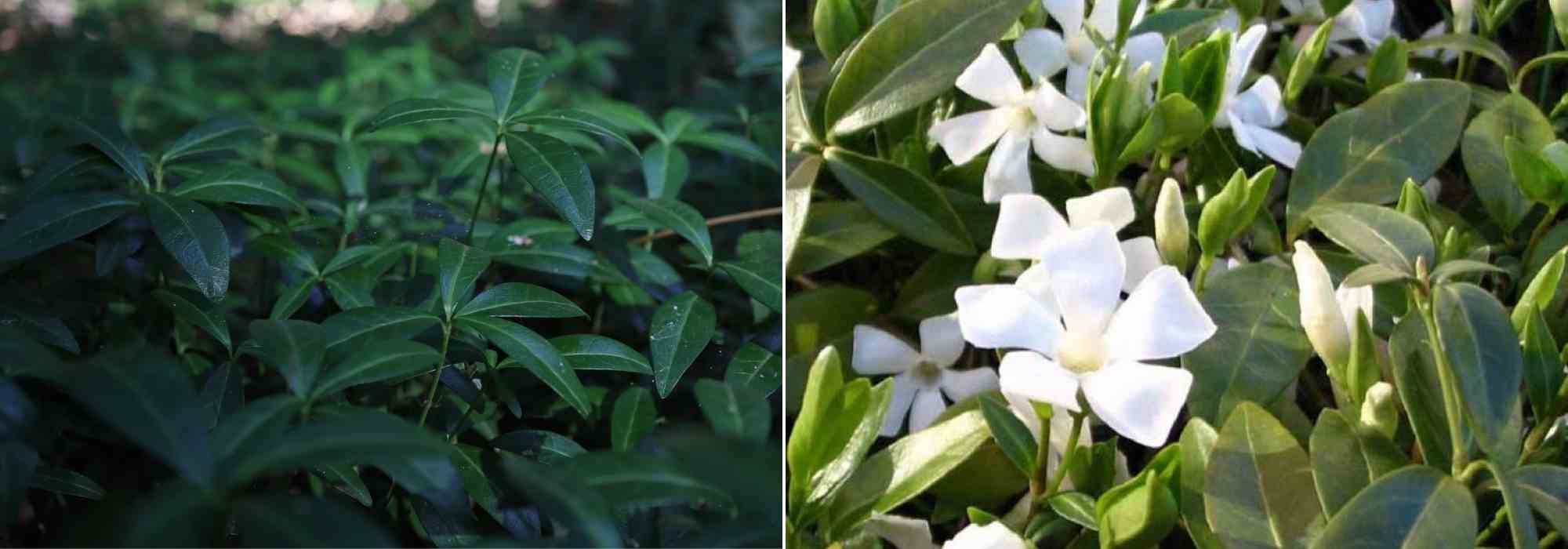
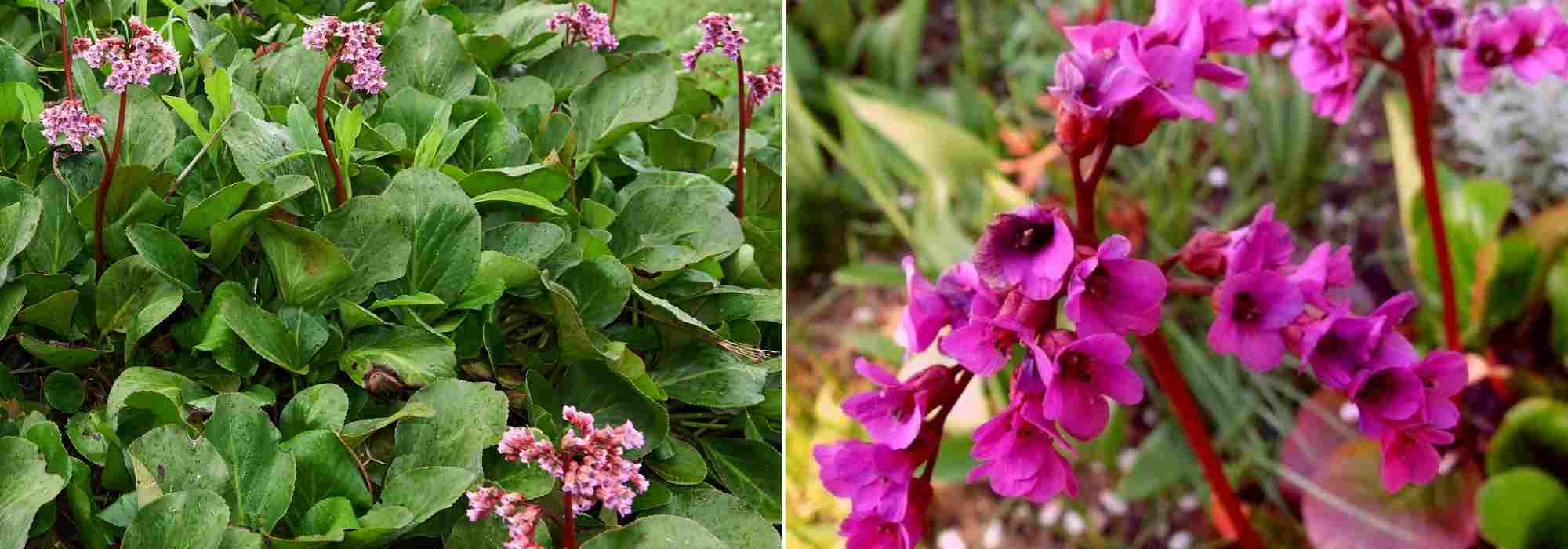
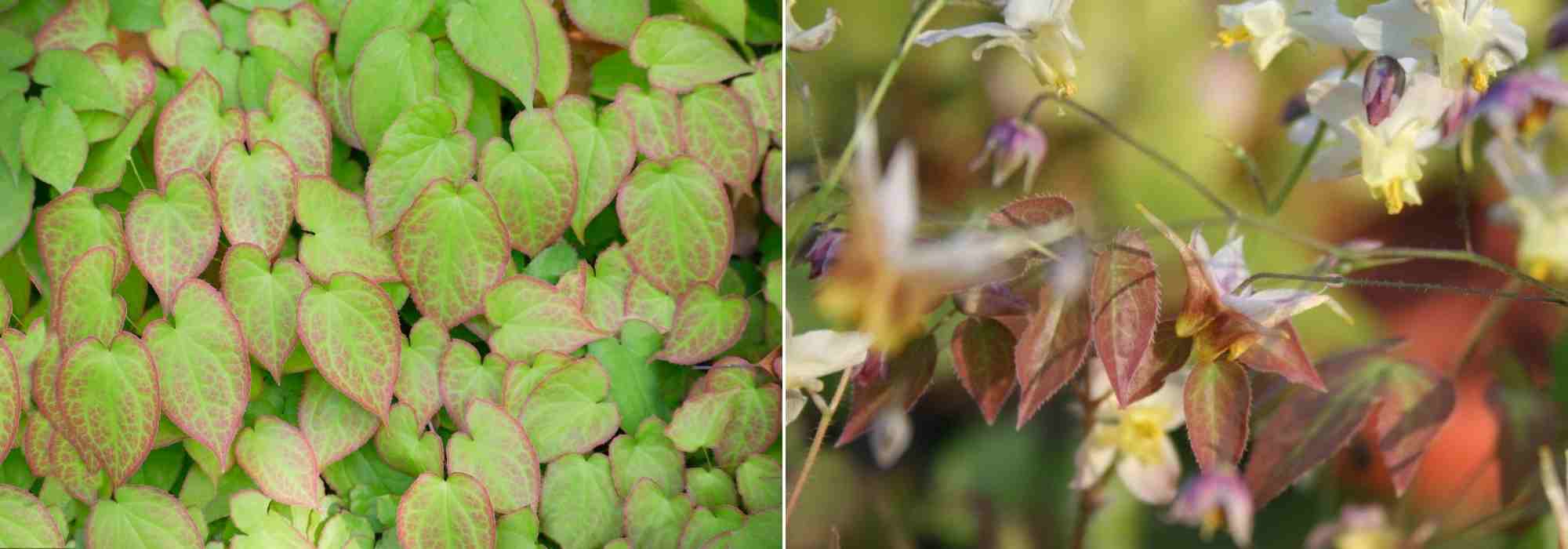
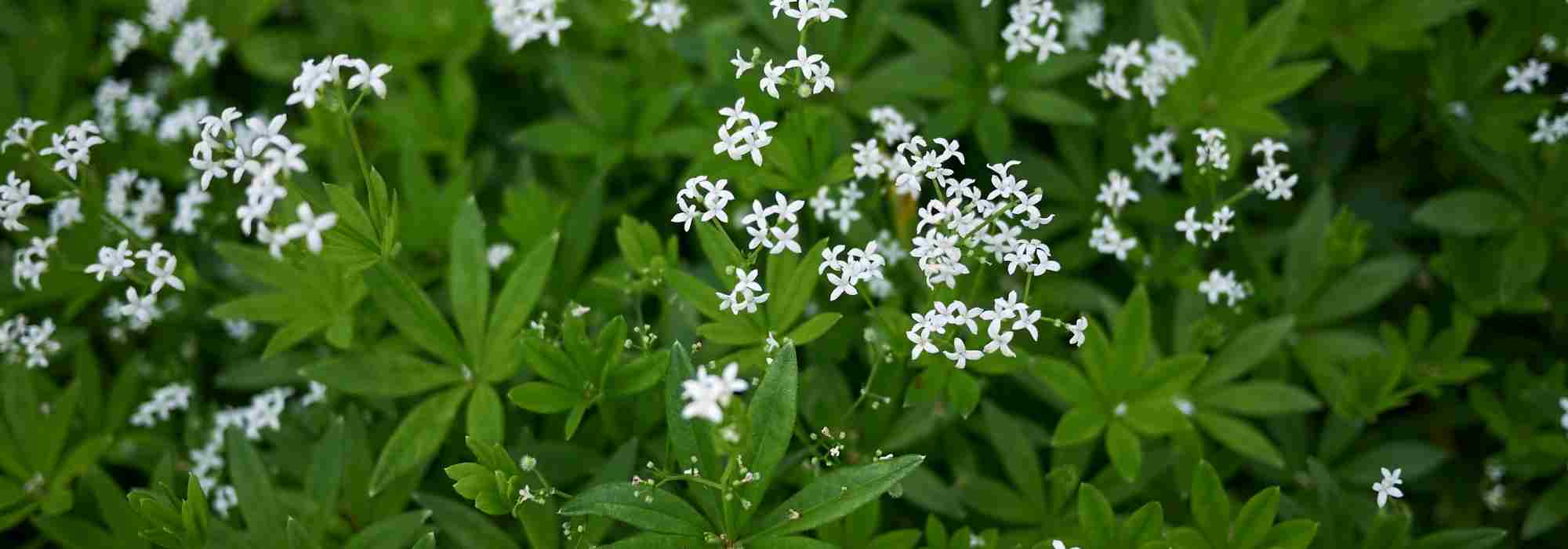
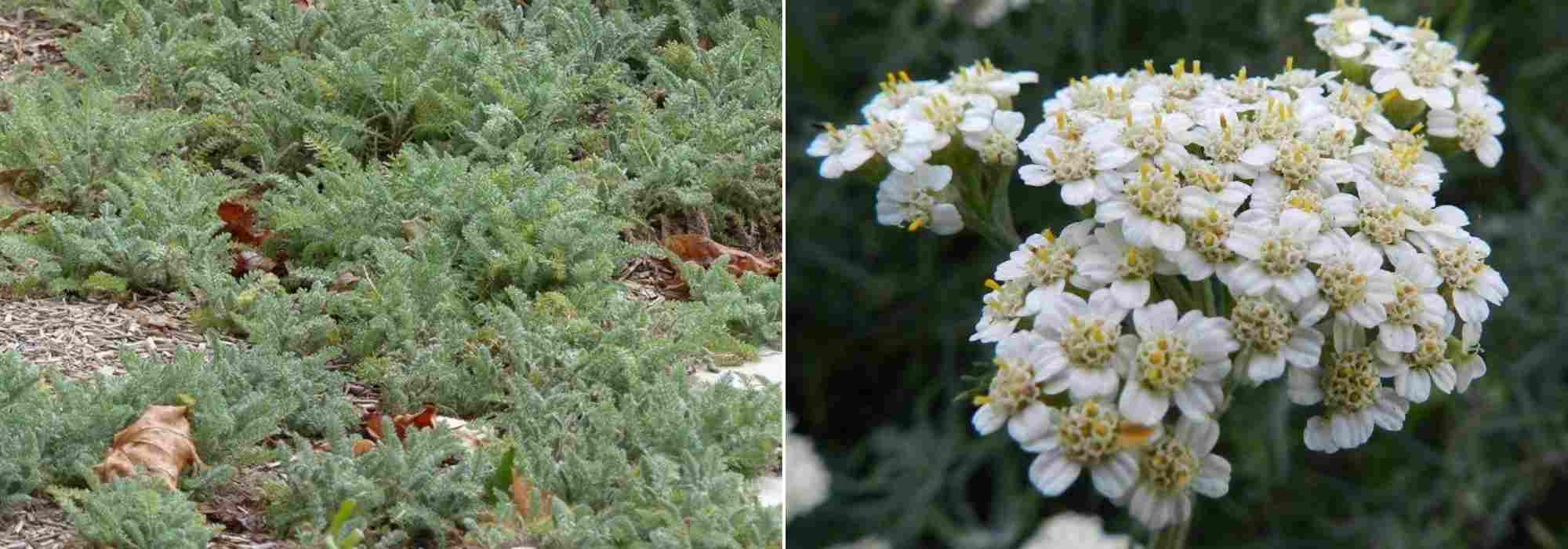
Comments